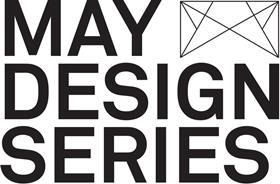The May Design Series focuses on the key trends and issues affecting interior design - and explores them in a compelling conference and seminar programme

New directions
The role of the interior designer continues to expand as the industry’s profile grows, but with this comes increased responsibilities. Designers not only need to understand the impact of macroeconomic and social changes on the built environment, they also need to be able to work as part of a dynamic delivery team to ensure their concepts are realised efficiently and effectively for their clients - often through a much greater and earlier involvement in the construction process.
As a result, alongside an understanding of design and architecture, interior designers increasingly need a detailed knowledge of new construction techniques and materials; they need to be familiar with advances in building services; and they need to have have an understanding of environmental compliance and construction management.
They also need to evolve with this fast-moving industry - for example, they need to be able to work in a virtual three-dimensional BIM environment or to specify products to meet a targeted SKA rating for sustainable fit-out.
Key seminars
Monday 18 May, 12.30 - 13.30
Creating successful workspaces
Tuesday 19 May, 12.30 - 13.30
SKA sustainable fit-out guide - combining sustainability and design
Tuesday 19 May, 12.30 - 13.30
BIM for fit-out
Tuesday 19 May, 14.00 - 15.00
Delivering on design intent - defining, designing and delivering
Interior Design
To respond effectively to a client’s brief, within its budget, designers need to be able to create solutions that combine the functional and efficient use of space with an understanding of aesthetics, colour, light and wellbeing.
Getting the colour scheme right is an essential part of any interior design job, and not purely from an aesthetic point of view. The impact of colour on the human psyche and its ability to affect people’s moods is well known, and it also has an impact on how an occupant perceives the size of a space.
Alongside colour, light is one of the key tools available to the interior designer. Good lighting can make or break the ambience of a space, so it pays to get it right.
This year’s May Design Series is packed full of inspiration on maximising the use of space, advice on the latest trends in colours, materials and textures, along with guidance on how to exploit daylight and artificial lighting to achieve a successful scheme.
Key conference session
Sunday 17 May, 11.30 - 12.30
New directions in materials, colour and texture
Key seminars
Sunday 17 May, 11.30 - 12.30
Residential lighting; designing without downlighting
Sunday 17 May, 13.00 - 14.00
Creating successful small spaces
Sunday 17 May, 13.00 - 14.00
Successfully connecting house and garden
Wellbeing
There is a growing understanding of the impact that a building’s design can have on occupants’ wellbeing, and a suggestion that good building design can actually improve health. Air quality, lighting and thermal comfort are all known to affect us physically, but there is a growing body of evidence indicating that building layout, the feel of a space and how it connects with nature can also have a bearing on mental wellbeing.
Business, in particular, has much to gain from workforce wellbeing as a means to reduce absenteeism and improve productivity. There is a need for more detailed qualitative research and robust evidence on the subject, but if a building’s design could be shown to promote wellbeing, and hence productivity, it could command a significantly higher rent.
Key conference sessions
Sunday 17 May, 13.00 - 14.00
Promoting wellbeing through design
Monday 18 May, 11.00 - 12.00
Worker wellbeing - design principles and delivery
Key seminars
Monday 18 May, 14.00 - 15.00
Lighting design - promoting health and wellbeing
Monday 18 May, 17.00 - 18.00
Workplace wellbeing design
The Big Picture
Now is an exciting time to be a designer. An ageing demographic means that the design of homes needs to change to accommodate less mobile, more dependant occupants. Designers such as PRP Architects are responding to the challenge through the development of homes and communities designed specifically to cater for the needs of older people. If enough such schemes are built, the hope is that the prospect of living in well-designed, energy-efficient accommodation could tempt empty nesters to leave the family home, releasing space for others to occupy, and thereby helping to ease the housing crisis.
Other designers are responding to the housing shortage by developing space-efficient solutions for functional, compact living that will allow greater numbers of smaller homes to be slotted into city-centre sites.
At the same time as the housing sector is undergoing a transformation, the retail environment too is facing dramatic change, due to both technological advancements and and the move away from large out-of-town retail parks to smaller local stores. Questions also remain over the future of the high street and the role good design can play in its resurrection.
Key conference sessions
Monday 18 May, 15.30 - 16.30
Can compact living solve the housing crisis?
Monday 18 May, 15.30 - 16.30
Challenges for women in design and construction - four perspectives
Key seminars
Monday 18 May, 12.30 - 13.30
Designing residential spaces for an ageing population
Monday 18 May, 15.30 - 16.30
Technology trends in retail
London ExCeL - 17-19 May, 2015
At May Design Series 2015, which is free to attend, you will find 500 brands over 200 of which will be making their UK debut at the show - we guarantee you’ll discover products you’ve never seen before.
Why visit
Find a breadth of products ready to buy from over 500 brands from 26 different countries. Source every space with our dedicated product areas; Furniture, Lighting, Kitchens, Bedrooms & Bathrooms, Décor, Fabric and AV & Home Automation.
Gain industry insight at the NEW complimentary high level conference and seminar programmes. See more at: www.maydesignseries.com




























No comments yet